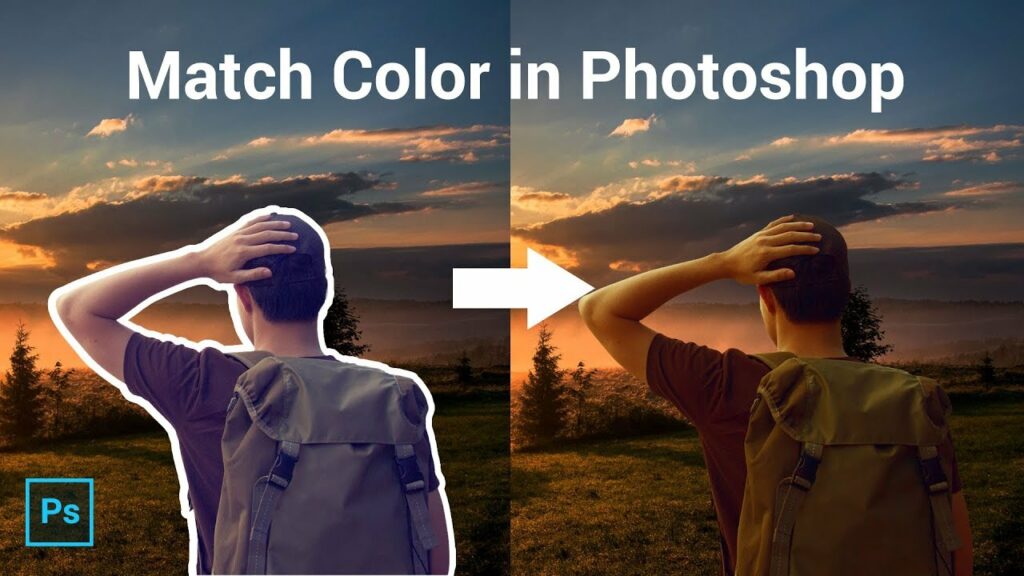Mastering Seamless Subject Integration: A Comprehensive Guide on Matching Subjects to Any Background in Photoshop

Introduction:
Photoshop, the quintessential tool for image manipulation, offers a realm of possibilities when it comes to seamlessly integrating subjects into diverse backgrounds. Whether you’re a photographer, digital artist, or graphic designer, the ability to match a subject into any background is a crucial skill that opens up a world of creative potential. In this extensive guide, we will explore various techniques, methods, and tips to achieve flawless subject-background integration in Photoshop.
Table of Contents:
- Understanding the Importance of Subject Integration:
- a. The Impact of Seamless Integration on Visual Cohesion
- b. Creating Consistency and Realism in Compositions
- c. Expanding Creative Possibilities in Digital Artistry
- Selecting the Right Subject for Seamless Integration:
- a. Analyzing Lighting and Perspective in the Original Image
- b. Choosing Subjects with Appropriate Poses and Expressions
- c. Adapting Subjects to Suit the Desired Background Atmosphere
- Essential Preparations for Integration in Photoshop:
- a. Organizing Layers for Non-Destructive Editing
- b. Familiarizing Yourself with Selection Tools and Techniques
- c. Setting Up a Versatile Workspace for Efficient Editing
- Basic Subject Integration Techniques:
- a. Utilizing the Magic Wand and Quick Selection Tools
- b. Applying Layer Masks for Seamless Edges
- c. Adjusting Brightness and Contrast for Consistency
- Advanced Integration Methods:
- a. Embracing the Pen Tool for Precise Selections
- b. Using Channels for Complex Subject Extraction
- c. Exploring Refine Edge and Select and Mask for Fine-Tuning
- Matching Colors and Tones:
- a. Adjusting Hue, Saturation, and Color Balance
- b. Integrating Ambient Light and Shadows
- c. Addressing Color Temperature Discrepancies
- Simulating Realistic Lighting Conditions:
- a. Replicating Natural Sunlight or Artificial Light Sources
- b. Creating Shadows for Grounded Integration
- c. Matching Directional Lighting for Convincing Results
- Adding Depth with Depth of Field Adjustments:
- a. Implementing Gaussian Blur for Background Bokeh
- b. Adjusting Lens Blur for Realistic Depth Perception
- c. Creating Atmospheric Perspective for Landscape Integration
- Blending Subjects with Background Textures:
- a. Incorporating Texture Overlays for Cohesion
- b. Matching Subject and Background Grain
- c. Enhancing Realism with Texture Mapping
- Troubleshooting Common Challenges:
- a. Dealing with Hair and Fine Details
- b. Addressing Perspective and Scale Discrepancies
- c. Avoiding Unnatural Halos and Artifacts
- Saving and Exporting Integrated Images:
- a. Choosing the Right File Format for Different Platforms
- b. Optimizing Images for Web or Print
- c. Preserving Layers for Future Adjustments
- Inspirational Examples and Case Studies:
- a. Showcasing Before and After Integrations
- b. Breakdowns of Notable Subject-Background Matches
- c. Exploring Different Styles and Approaches
Conclusion:
Mastering the art of seamlessly matching a subject into any background in Photoshop empowers creatives to transcend the boundaries of reality, enabling the creation of visually stunning and conceptually rich compositions. From basic techniques to advanced methods, this comprehensive guide has equipped you with the knowledge and tools needed to achieve flawless subject integration. As you embark on your journey of mastering this skill, remember that patience, attention to detail, and a thorough understanding of Photoshop’s capabilities will guide you toward creating images that captivate viewers and stand out in a world saturated with visuals. So, dive into the world of subject-background integration, and let your imagination blend reality and fantasy with finesse.




